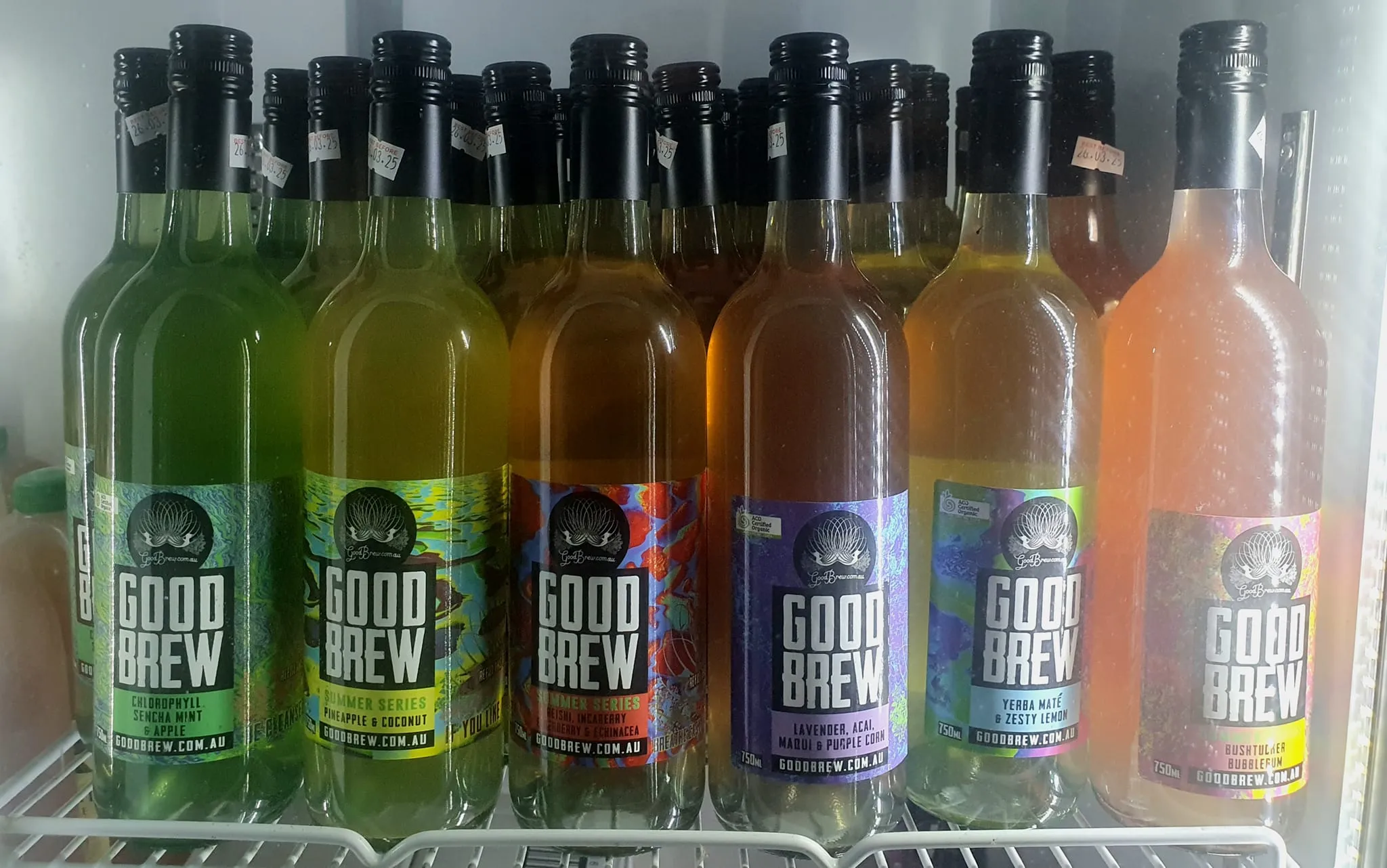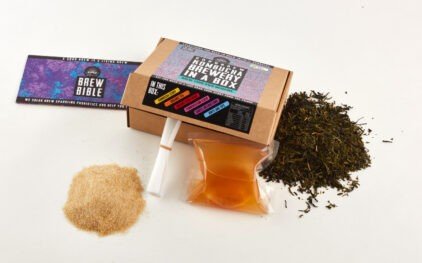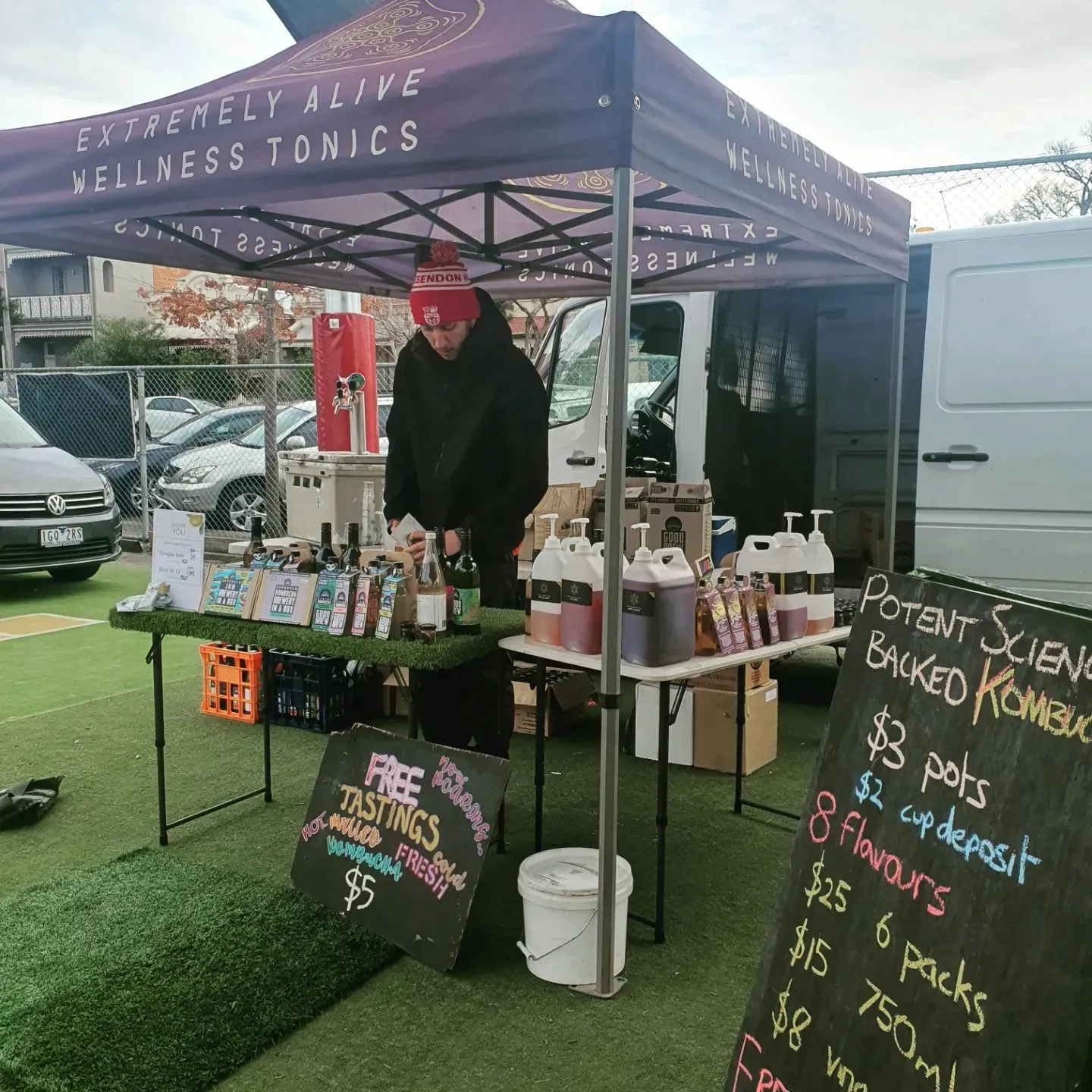
But crack open a few, and the flavours couldn’t be more different.
Some taste like fruit soda. Others are dry and tangy, with a vinegary finish. You might start wondering: Is one of them off? Or am I doing it wrong?
The answer is simpler than you think: kombucha is a living, brewed product, and the way it’s made dramatically changes the way it tastes.
In this article, we break down seven key reasons why kombucha flavour varies so much from brand to brand, from fermentation time and tea base, to pasteurisation and sweeteners, so you can choose a brew that matches your taste (and expectations).
1. Fermentation Time Changes Everything
Think of kombucha like bread or cheese: the longer it ferments, the more complex it becomes.
Short fermentation (7–10 days):
Longer fermentation (2–4 weeks):
At Good Brew, we use long fermentation cycles and bottle-condition each brew — meaning flavour continues to evolve naturally.

2. Tea Base and Brewing Ingredients
Not all kombucha starts the same way. The type of tea used makes a big difference.
| Tea Base | Flavour Notes |
|---|---|
| Black Tea | Bold, malty, deep |
| Green Tea | Light, grassy, slightly bitter |
| White Tea | Subtle, floral |
| Herbal Blends | Can range from spiced to fruity |
Quality also plays a role. Organic, loose-leaf teas and real botanicals produce cleaner, richer flavour compared to cheap tea bags or synthetic extracts.
Good Brew uses organic tea and whole herbs, spices, and fruits, not “natural flavouring”.
3. Pasteurised vs. Raw
Pasteurisation is typically used to make kombucha shelf-stable. But in doing so, it also flattens flavour.
| Pasteurised Kombucha | Raw, Unfiltered Kombucha | |
|---|---|---|
| Shelf-stable? | Yes | No (must be refrigerated) |
| Taste | Smoother, safer for mass market | Tangy, evolving, sometimes unpredictable |
| Microbes | Removed by heat | Alive and active |
We don’t pasteurise. Good Brew is kept cold from brew to bottle — so the taste stays alive, just like the cultures inside.
Want to know why that matters for your gut? See the research here

4. Sweeteners, Sugar & Aftertaste
Here’s where the difference really kicks in. Some kombucha brands add sugar or sweeteners (like stevia or erythritol) after brewing to maintain a soda-like flavour.
Others, like us, let the natural fermentation do the talking.
Back-sweetened kombucha:
Naturally fermented kombucha:
If your kombucha tastes like cordial, you’re probably drinking something designed to imitate the experience of soda — not honour the fermentation process.
5. Brand Philosophy = Brewing Style
Not every kombucha brand wants to challenge your taste buds. Many aim for predictability, same taste every time, broadest appeal possible.
At Good Brew, we see kombucha as a living, craft beverage, not a health soda. That means:


6. How to Choose the Right Kombucha for Your Taste
Kombucha is a broad category. Use this chart to guide your flavour exploration:
| If You Like… | Try This Kombucha Type |
|---|---|
| Soda or sweet sparkling drinks | Short-fermented, sweetened, fruit-forward |
| Natural wine or sour beer | Raw, dry kombucha with long fermentation |
| Herbal tea or botanicals | Kombucha with infused herbs or florals |
| Citrus, spice or zing | Kombucha with ginger, lemon, turmeric, etc. |
Like coffee, it takes a few tries to find “your” style, but once you do, you won’t go back.
Need help identifying the good stuff? Read: 5 Signs Your Kombucha Might Be Dead
7. Taste Is the Proof of Authenticity
At the end of the day, taste is more than preference, it’s a clue to how your kombucha was made.
A kombucha that’s too sweet, too flat, or too clean might be missing the funk, fizz, and finish that real fermentation provides.
Our kombucha is raw, bottle-conditioned, and naturally carbonated, and if you can taste the difference, it’s because there is one.

From ginger-lime to hibiscus mint, our flavours evolve naturally. Explore the Good Brew kombucha range and find the taste that actually lives up to the name.

 54 Hope St, Brunswick VIC 3056
54 Hope St, Brunswick VIC 3056
